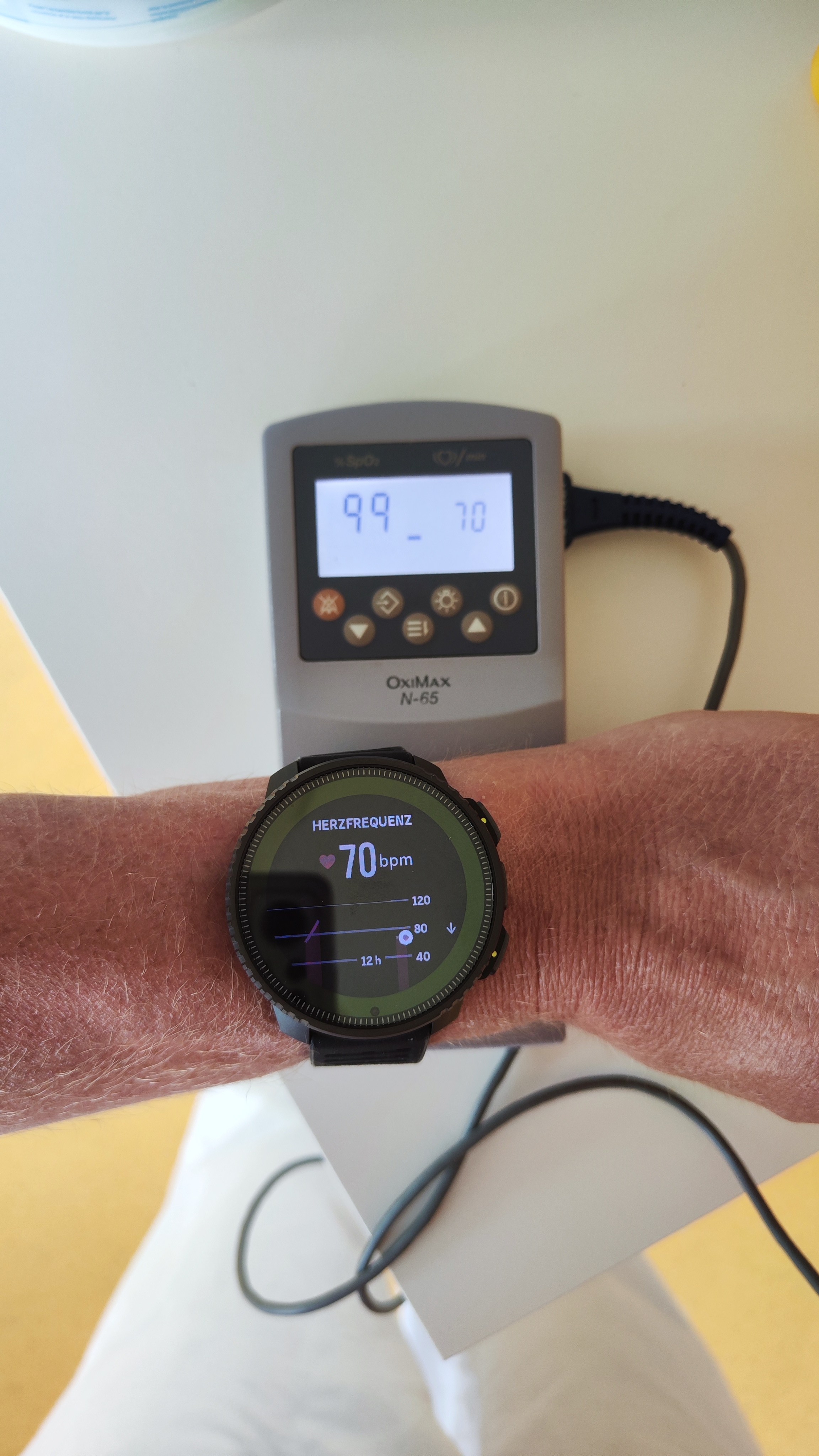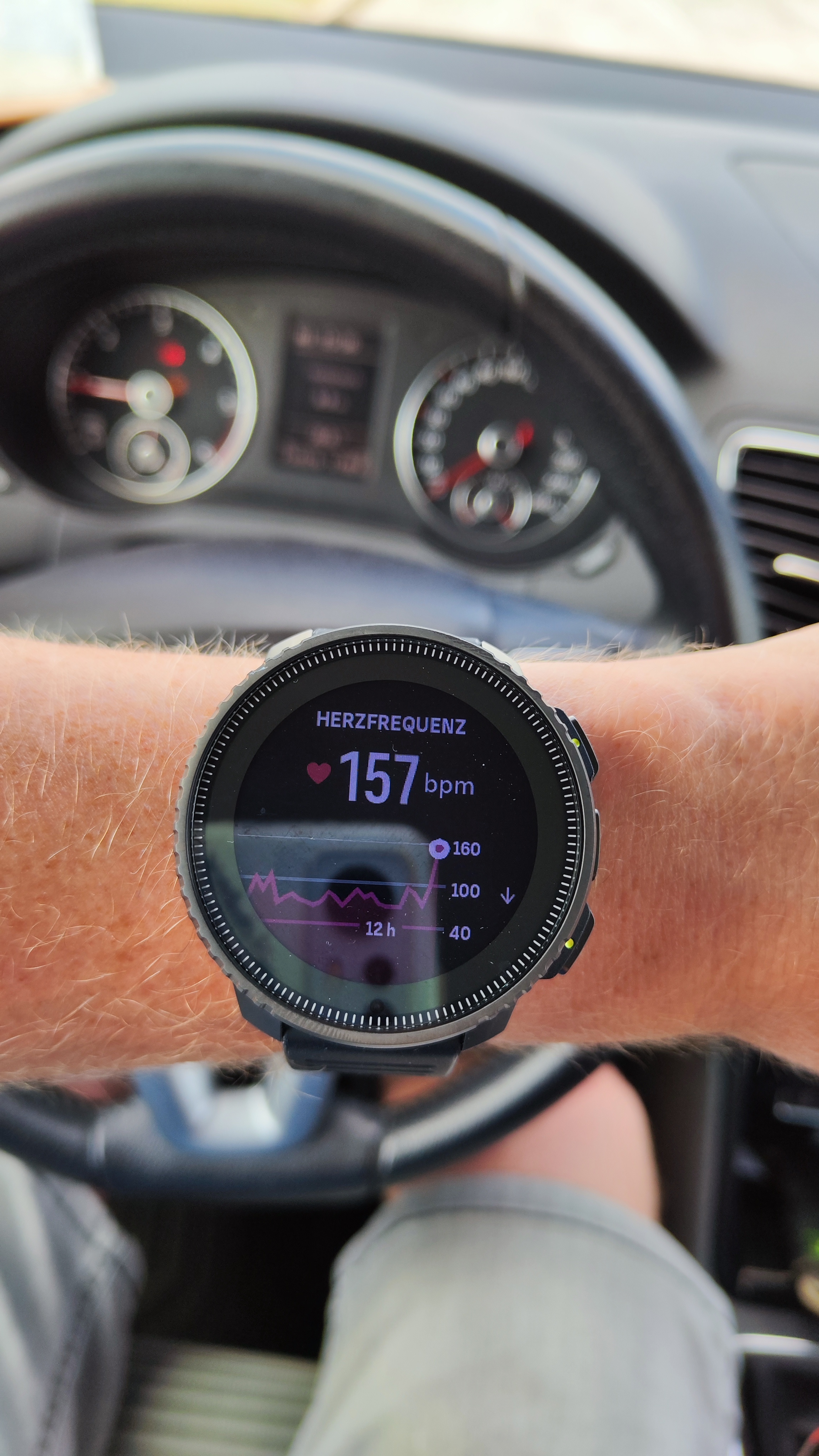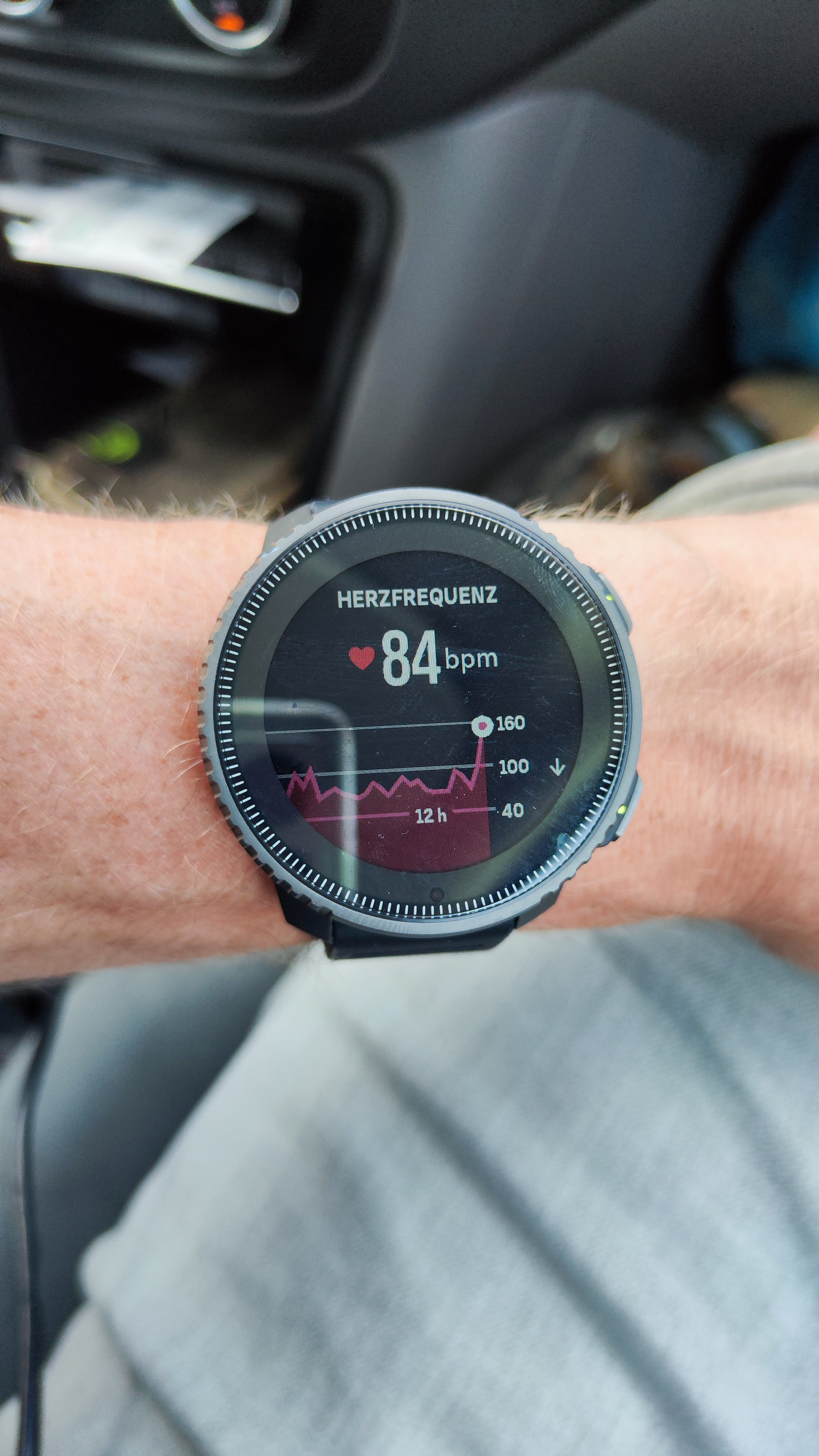OHR Sensor often good BUT WHY SOMETIMES NOT
-
Wearing the watch a step tighter improved the situation during my exercise yesterday!

-
@SuperFlo75 Use a Chest Strap !!! Or buy a GARMIN! The OHR Sensor 5th Generation ist Fucking good!!!

-
@GiPFELKiND yes, I think you are right that Garmin and Coros are way ahead regarding OHR. Little surprised that new watch again has same sensor… But anyway I would not wear a Garmin / Coros Watch because of other issues… And even if Suuntos OHR would be better, I would still wear a belt. Think no serious athlete uses OHR during training, even if they wear Garmin. It is more a amateur wishful thinking if you ask me. I more dream of a Suunto without OHR sensor…
-
FWIW I had a Garmin Enduro earlier this year, used it for a few months before selling it. Same as my SV, the OHR on it was awful and unusable so I ended up using a chest strap. Plenty of other things which ended up annoying me such as your average pace is only shown in 5 second increments rather than 1 second like Suunto. I’ve also had a Coros Apex, again the OHR was no good; it was also the most cheapest feeling, plasticy watch I’ve ever owned so it didn’t stay with me for long
For me personally the OHR seems to not work on any brand of watch, the only one that got relatively close was a Wahoo Elemnt Rival and even that wasn’t perfect. If you care about the accuracy and reliability of your HR measurements then you need to be using a chest strap
-
I think it is the correct topic about OHR and the Vertical.
The last two rides with the bike I wore the Vertical on my right wrist. This is the side, where I never had problems with OHR devices, no difference with several watches of all brands. All OHR data are identical with the Polar Verity Sense that I have as backup.
The Vertical was unsteady and often up to 50 bpm over my actual heart rate. I changed the position, tightened the strap, the result was not satisfying.
Today I tested the Vertical on the treadmill, as usual on my right wrist. I started the OHR about 10 minutes before I started the actity, to avoid any troubles. But as you can see in the screenshot 1, the first 2 km of the run, the reading of heart rate went crazy. I changed the position twice and tightened the strap to the max after the first data over 130 bpm in the first minute, but no change. I repeated it again, but it doesn’t change anything within the first two kilometers. Afterwards it was correct until the end, no difference to the data of the Polar Verity Sense. This you can see in screenshot 2 (data of the Verity sense).
I will check it further on and hope that there will be some better reading with the coming update. To repeat it, I never had any issues with OHR on my wrist.
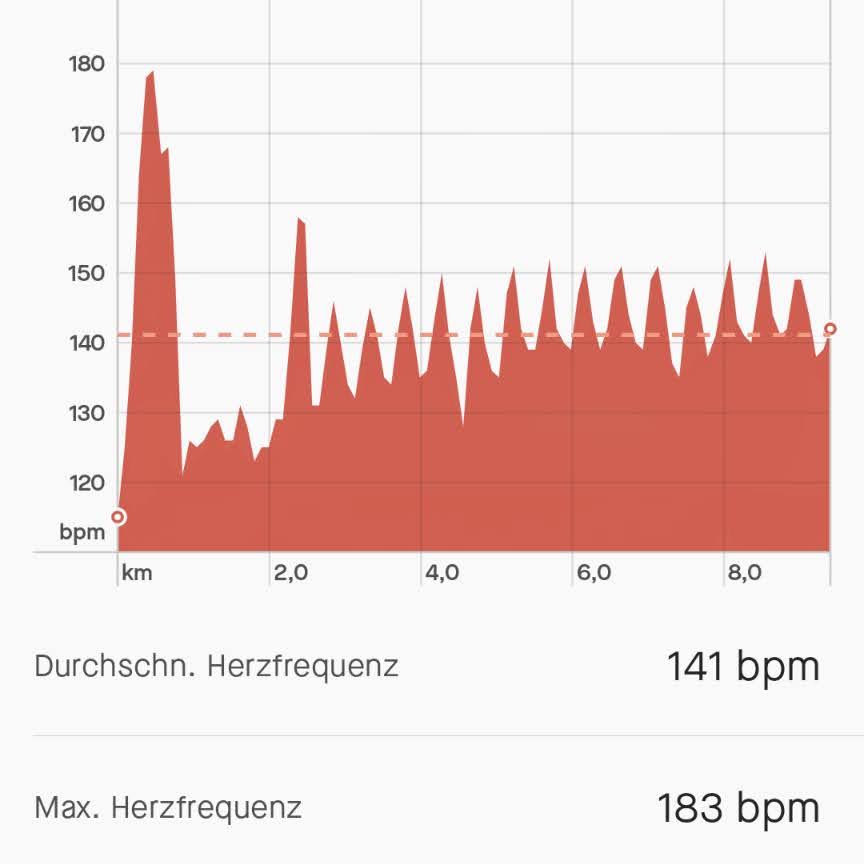
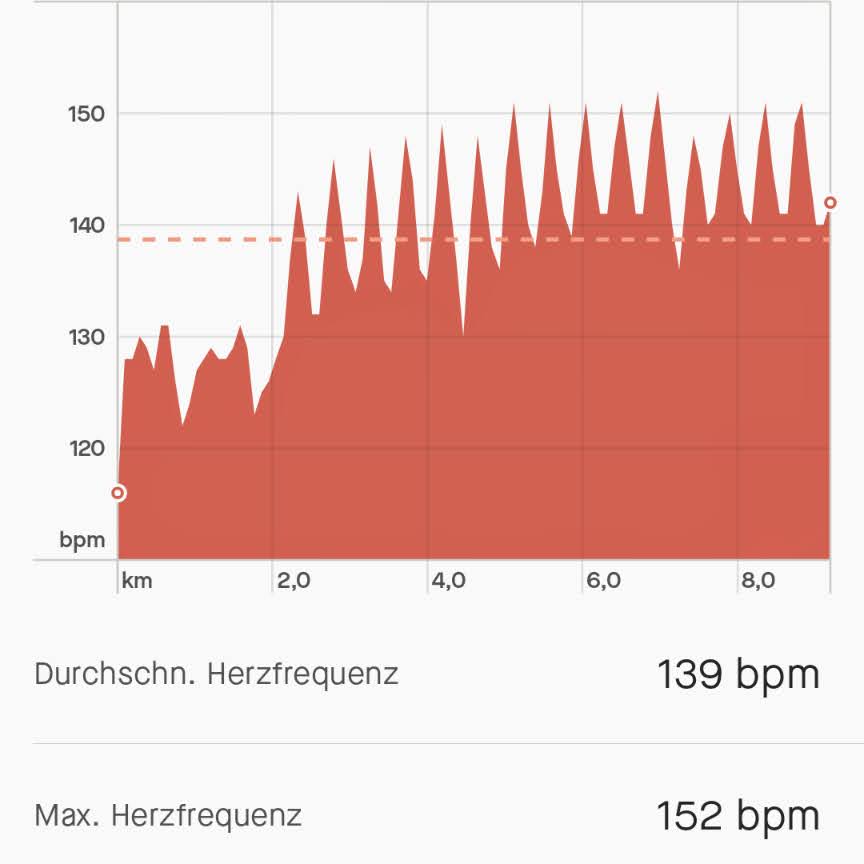
-
I am not an expert by any means, but there are many things that can cause that. First of all OHR is not perfect and I would use a chest strap - especially for bike riding. In fact I use a chest strap during all activities, even for some basic stuff like walking. It can be for example a cold environment so it takes a while to warm up the sensor / arm. It’s a big watch, which is also not in favour for accurate HR readings. I know this did not help much, just sharing my 2 cents.
-
@tomasbartko
It’s not a real problem for me, because on the bike there is only the option to use an external sensor, because the watch is mounted on the handle bar. In the kayak too. And on the treadmill I usually mount the watch near the display of the treadmill to have the information about the data in front of me.
But on the wrist the Vertical is not perfect for me compared to other big watches. I tested other big watches without any problems and under equal conditions with very good and stable results. No difference to the backup solution of a Polar Verity Sense.
-
I though about the reason, why the OHR sensor might have sometime some problems.
- I remembered a Casio GBD-H1000 and that there were sometimes problems with the OHR too. The watch is heavy, 101 gr, and has a strap, which is about 20 to 22 mm in the area of the clasp of the resin strap. The resin strap is hard and inflexible, the watch too heavy for a firm fit on the wrist, there are always small movements of the watch, even if the strap is tightened to the maximum.
- The Garmin Fenix 6X Pro is also heavy watch, 66 gr without strap, the strap is 26 mm and I never had problems with its OHR.
- The Garmin Forerunner 255 is a lightweight watch, 31 gr without strap, the strap is 22 mm and I never had problems with its OHR.
- It can not be that the kind of OHR sensor is so different, that I have problems with the Casio and the Vertical.
- I do NOT believe that the temperature outdoor is the reason for differences, because the above listed watches are working in these conditions flawlessly.
- I do NOT believe that a OHR sensor needs some minutes to collect correct data.
So the reason must be the ratio between the weight of the watch body and the strap (material, width, ability to fix the watch without movement, but not too tight to impair blood flow). Heavy watch and wide enough strap must be the solution.
I changed the 22 mm strap of the Vertical, which is a heavy watch for me, 74 gr in solar titanium, to a 26 mm strap. Then I would have a comparison to the Garmin Fenix 6X pro.
And I was not surprised today, that during several test activities the OHR was spot on. No crazy readings, no time to warm up, no matter which movement the wrist made. It just worked during running on the treadmill, cycling on rough trails in the afternoon, walking to the bakery in the morning, doing some weight lifting in the evening.
With the 26 mm velcro strap the Vertical was well fitted to the wrist, absolutely no movement on the wrist and the feeling that it was light and not strong tightened to the wrist (the main advantage of the velcro strap).
And of course it is just my solution and nobody should consider this solution as devaluation of Suunto and the Vertical …


-
@pilleus which velcro strap are you using now?
-
@6294946 said in OHR Sensor often good BUT WHY SOMETIMES NOT:
@pilleus which velcro strap are you using now?
I use this one (with two separate 22 mm spring bars instead of the original spring bars) …
Threading it into the gap is a bit difficult, but after that it works fine. And may be the strap will be damaged within a few months in the area of the attachment to the watch, because of the reduction of its width from 26 to 22 mm at this point. But it is worth the try.
-
FWIW have a look on Strapsco, that’s where I get the bulk of my straps for the dozen or so watches that I have. They often have specials so they’re really affordable and they always seem to have a ‘Buy two get the third free’ deal running. I do have a couple of Suunto straps but I definitely couldn’t afford to buy them exclusively as much as I would like to
-
@pilleus said in OHR Sensor often good BUT WHY SOMETIMES NOT:
With the 26 mm velcro strap the Vertical
also is able to check blood oxygen in 8 of 10 cases I start the test. With the original strap I never got a valid measurement.

-
D dreamer_ referenced this topic on
-
@pilleus Do you have any new experiences regarding the accuracy and width of the band? Your solution has made me curious, but I have a Suunto Race. Unfortunately, it is almost impossible to thread the 26mm strap into the 22mm wide case. Maybe I’ll try a 24mm strap.
-
I don’t have a Race. But 24 mm should be no problem with the original spring bars.

